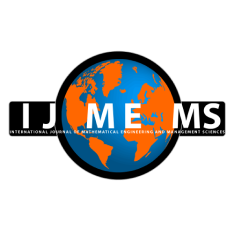Anik Anekawati
Faculty of Teacher Training and Education, Universitas Wiraraja, Sumenep, Indonesia.
Purhadi
Department of Statistics, Institut Teknologi Sepuluh Nopember, Surabaya, Indonesia.
Mohammad Rofik
Faculty of Economics and Business, Universitas Wiraraja, Sumenep, Indonesia.
Syaifurrahman Hidayat
Faculty of Health Science, Universitas Wiraraja, Sumenep, Indonesia.
DOI https://doi.org/10.33889/IJMEMS.2024.9.3.028
Abstract
Spatial regression, particularly the Spatial Error Model (SERM), was utilized in prior studies to analyze Human Development Index (HDI) modeling. However, the studies were unable to determine which dimension among the three defined by the UN and BPS had the significant impact on HDI, as they constructed models based on the indicators used for the interpretation of the dimensions. Therefore, a comprehensive analysis combining spatial regression and Structural Equation Modeling (SEM), known as spatial SEM, was deemed necessary. This is the reason the current study aimed to develop SERM-SEM modeling holistically. The model parameters were estimated using the Generalized Method of Moments (GMM). To assess spatial dependency, the Lagrange Multiplier (LM) method was employed, with a distinct model error distribution compared to the error distribution of the traditional spatial model. The result of the LM test development showed that, under the null hypothesis, the LM test statistics followed a distribution. The results of the SERM-SEM model development were applied to HDI modeling using data in 2022 with three latent variables, namely a Long and Healthy Life (LHL), Knowledge (Know_L), and a Decent Standard of Living (DLS) (based on UN standards). The assessment of the outer model in SEM was based on the loading factor values that exceed 0.5 and their significance. This evaluation aimed to identify indicators that effectively explained or measured latent variables, so it got the revised model in SEM. These indicators are LHL2 and LHL 4 to form LHL. DLS1 and DLS3 are indicators to make up DLS, and for Know_L, they are K2 and K3. The revised SEM model was analyzed using spatial. The results of the spatial dependency test showed that the HDI model significantly led to the SERM-SEM model. Knowledge and a decent standard of living variables significantly influence HDI.
Keywords- Structural equation modeling, Spatial, Spatial error model, Human development index, Spatial SEM.
Citation
Anekawati, A., Purhadi,Rofik, M., & Hidayat, S. (2024). A Spatial Error Model in Structural Equation for the Human Development Index Modeling. International Journal of Mathematical, Engineering and Management Sciences, 9(3), 537-556. https://doi.org/10.33889/IJMEMS.2024.9.3.028.



